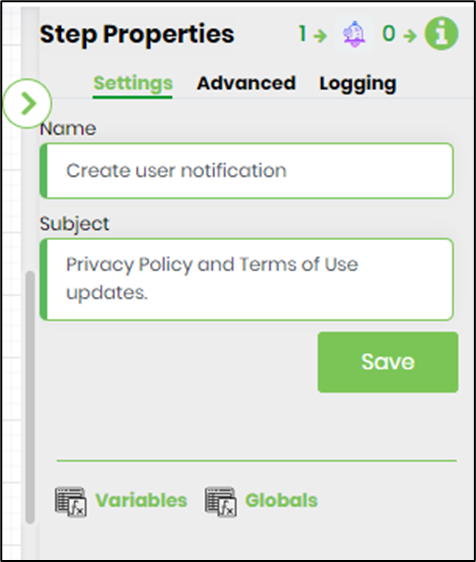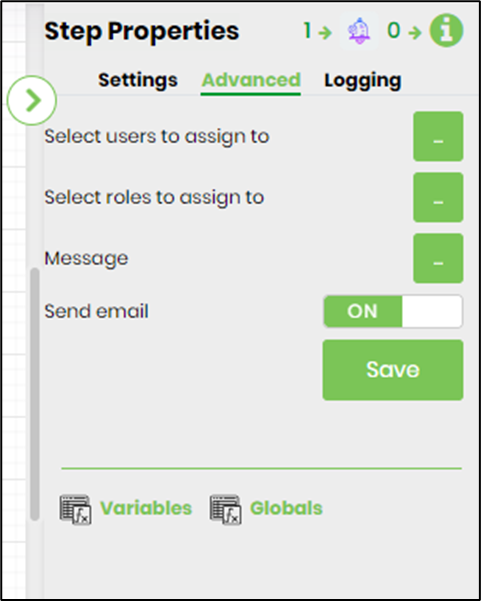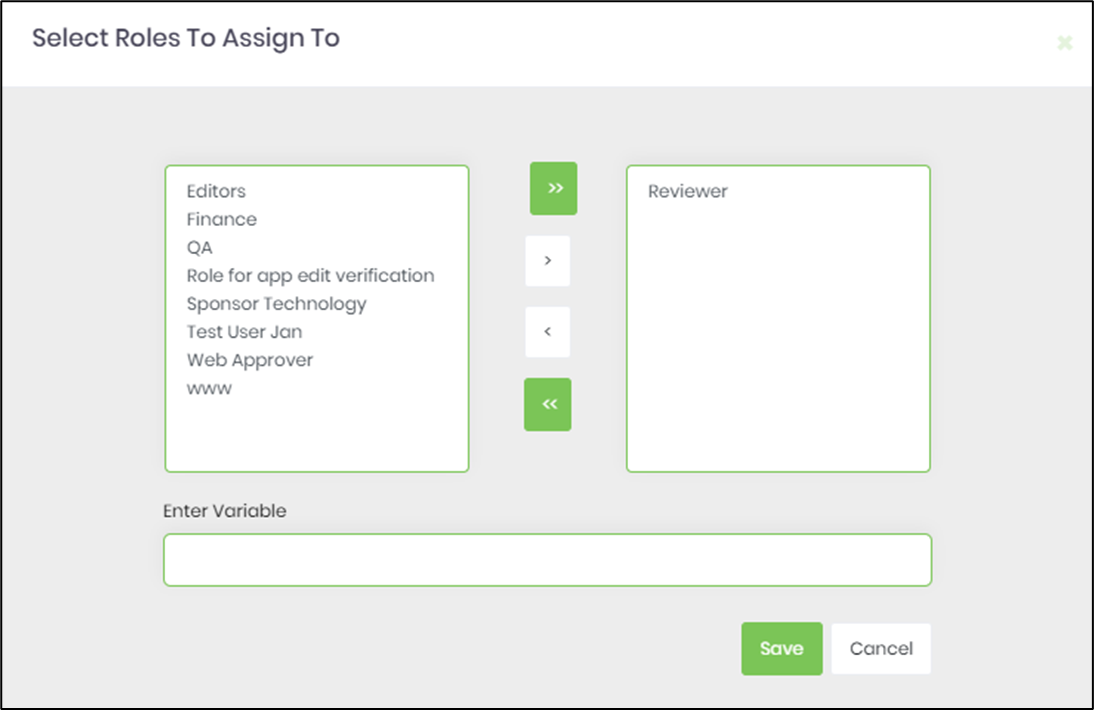Description:
Create a user notification to a selected number of users.
Inputs
- assignTo – list of users to assign the notification
- assignToRoles– Roles user to assign the notification
- subject – subject for the notification
- Message- description for the notification
- emailNotify- Send email for notification
Returns
- completed – notification was created
- error – notification was not created
Usage:

Example:
Let’s build and execute the “createUserNotificationDef” example.
- Create a new definition called “createUserNotificationDef”
- Select the definition and click the “design” button
- Drag and connect the "createUserNotification" step as shown in the above graphic
- Click on the "createUserNotification" step to configure its "Settings" properties. Provide a name to the step. Provide the subject text information.

- Click on the "createUserNotification" step to configure its "Advanced" properties. Click on the button to select users to assign to. Click on the button to select application roles to assign to. Click on the button to configure the notification message. Select if email is to be sent to the user along with the notification.

- Click on the button to select users to assign to. Click on Select the users to route to and select users or provide variable reference containing UserIDs (GUID)

- Click on the button to select application roles to assign to. Click on select roles to route to and select application role.

- Click on the button to configure the notification message. Click on Message and use the existing template (you can edit existing template as well) as email body or create custom template as message.

- The “Logging” setting configuration is necessary for documentation and also measure the workflow progress and the percent complete. This is acheived by configuring the step state and percent fields individually as shown in the images below. Configure the “Logging” using the following properties.

- Save the process definition. Create a new process instance and execute. The process step should create the notification to the users / roles and send email, as configured. Navigate to Status - Email Queue to view the user notification emails.